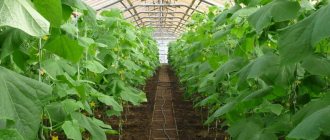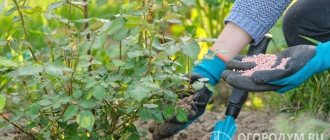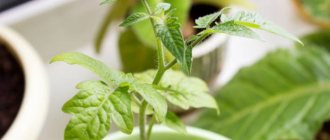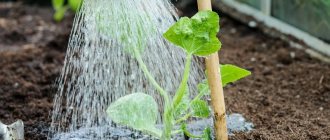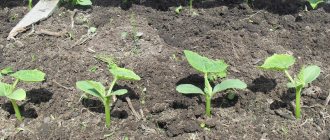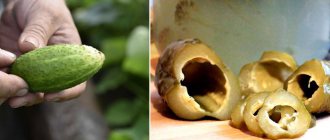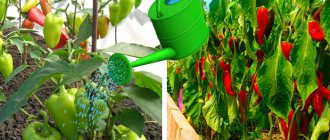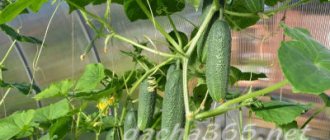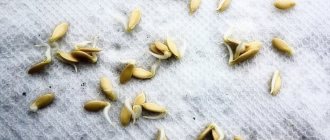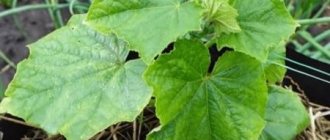What fertilizers do cucumbers especially need in a greenhouse or greenhouse, depending on the stage of their growth and how to fertilize them correctly? How many times during the season should this vegetable crop be fertilized? Our article will help answer these questions.
One of the prerequisites for abundant fruiting of cucumbers is the regular addition of nutrients to the soil. But plants in a greenhouse or hotbed must be fertilized correctly and in a timely manner, otherwise they will lose their taste and bear fruit worse.
The need to feed greenhouse cucumbers
Cucumbers are successfully grown both in street beds and in greenhouses and greenhouses (including polycarbonate ones). In closed ground, the crop is provided with optimal climatic conditions for vegetation, but the owner of the garden is solely responsible for the supply of nutrients. Plants require various micro- and macroelements at different phases of vegetative development (rooting, growth, growth of green mass, flowering, fruiting).
The root system, located close to the surface, cannot independently obtain the necessary nutrition from the depths. Feeding cucumbers in a greenhouse allows you to provide the crop with everything it needs, as well as increase its immunity to diseases. This operation must be performed at all stages of growing cucumbers: from planting seeds to the stage of harvesting fruits.
Two methods are used to apply fertilizers:
- Under the root. Nutrient compositions are applied to the soil in dry form, but most often solutions based on organic and mineral components are pre-prepared; a watering can is required to fertilize the plantings. Before carrying out the procedure, it is necessary to moisten the soil around the bushes, which ensures better absorption of the applied substances.
- Foliar (additional). The foliage of plants is sprayed with nutrient solutions. For these purposes, you can use any type of sprayer. You need to feed cucumbers early in the morning or in the evening. Example of fertilizer compositions: 10 g wood ash/1 liter of water, 1 tsp. boric acid + 10 crystals of potassium permanganate / 1 liter of water.
Foliar feeding, despite its effectiveness and speed, cannot replace the application of fertilizers to the soil.
How to feed cucumbers
Cucumbers are easy to grow. The plant is tall, grows quickly, and abundantly increases its vegetative mass. you should not plant seedlings in open ground or greenhouses too early . In the southern regions, the crop is sown directly in open ground (seedless cultivation method).
The tropical vegetable loves moisture, fertile soil, light and warmth . It is grown all over the world, with the leading producing countries being China, Russia and Turkey.
Features of seasonal feeding
The nutritional preferences of cucumbers differ significantly from the needs of other vegetables and root vegetables.
Important: cucumber, unlike tomatoes, is especially sensitive to the presence of organic matter in the soil; the crop grows poorly in poor soils .
Despite the fact that the vegetable produces a voluminous, powerful vegetative mass, it is less demanding of nitrogen nutrition than tomatoes.
Most nitrogen fertilizers are applied at the very beginning of growth. Potassium is a key nutritional element and is added throughout the growing season.
In addition, the crop loves calcium and magnesium ; fertilizing is applied in the same amount as nitrogen fertilizers. In autumn or early spring, during the main filling of the soil for cucumbers, the soil is limed and dolomite flour or ash is added.
Organic matter (rotted manure, compost, bird droppings) is added to the planting holes immediately before planting or sowing. When planting late, green manure, nettles, and weeds are placed in the holes.
Types of fertilizers used when growing cucumbers in a greenhouse
The types of fertilizers required for vegetable crops vary depending on the stage of vegetative development, the type of soil and the requirements of the variety being grown.
If cucumbers do not grow well in a greenhouse: how to feed the plants:
Mineral supplements
The main elements that cucumbers require when growing them are nitrogen, potassium and phosphorus.
What are these fertilizers for?
- Without nitrogen, any plants cannot develop normally. The element is necessary for the growing season in any period; it is needed for metabolism and the formation of green mass.
- Potassium is important for stimulating photosynthesis, increasing the rate of protein-carbohydrate metabolism and countering external adverse factors.
- Phosphorus is required for metabolism, stimulating the development of the root system, accelerating the process of fruit formation and increasing their number.
These substances can be applied separately or be part of complex fertilizers.
Also required for the development of culture are: calcium, copper, boron, iron and other elements.
The most common types of chemicals used to fertilize cucumbers:
- Potassium: potassium chloride and sulfate, potassium salt, potassium nitrate.
- Nitrogen: urea, ammonium nitrate.
- Phosphoric: superphosphate, orthophosphate.
Today, manufacturers offer phosphorus-potassium, nitrogen-phosphorus, nitrogen-potassium, as well as complexes containing all the most important components for cucumbers. They are available in both powder and liquid form. For example, nitroammophoska contains nitrogen and phosphorus, as well as some other elements. The main components of potassium phosphate are K and P.
The most popular compositions for fertilizing cucumbers:
- 10 g of ammonium nitrate, potassium salt and superphosphate per bucket of water;
- 20 g of superphosphate, urea, potassium sulfate per 10 liters of water.
Organic fertilizers
Such fertilizing is perfectly absorbed by cucumbers and helps to obtain a decent harvest.
How can you feed cucumbers grown in a greenhouse:
- Compost.
This substrate is obtained after the decomposition of various types of organic matter: plant residues, mowed grass, household waste, etc. The nutrient mixture is formed as a result of natural decay (with the participation of microorganisms) and the influence of worms and insects. The speed of composting depends on the temperature and humidity of the environment, as well as the access of air to the rotting raw materials. Without the use of process accelerators, fertilizer (soil mixture) enriched with nitrogen, potassium and phosphorus can be obtained approximately two years after planting.
What is good about compost:
- it is environmentally friendly;
- contains a large number of micro- and macroelements;
- can be applied in any quantity to the soil.
- To obtain fertilizer, no financial investment is required, which can also be considered its advantage. Compost is placed in the holes before planting the plant or applied under it during the process of growth and development.
- Manure
.
Of the fertilizers that are excrement of farm animals, the most popular are mullein and bird droppings.
Using manure as a top dressing allows you to:
- saturate the soil with the necessary elements;
- improve the physical and mechanical characteristics of the earth;
- activate microflora;
- increase the absorption of mineral fertilizers by plants;
- saturate the soil with carbon dioxide.
Fresh manure is not recommended for fertilizing plants, as it can harm them due to its high toxicity. It can be used if there is no direct contact with the crop, for example, to warm the soil or to add it to the ground during the autumn digging of beds. Rotted manure is more suitable as a top dressing, as it perfectly restores soil fertility.
To apply under cucumbers, prepare solutions: chicken manure is diluted with water in a ratio of 1:15, cow manure - 1:6. It is recommended to infuse the compositions for a week. Before applying under the bush, you should dilute them with water (for 1 liter of solution you need 2 liters of water).
- Peat.
Despite the rather low content of nutritional components, this fertilizer improves the soil structure well. The most nutritious is lowland peat. To increase the fertility of the land, you need to add 5...10 kg of peat per 1 m2. In a greenhouse, peat retains its characteristics for about 2-3 years.
You can also use other types of organic matter as fertilizers: wood ash, sawdust, silt, etc.
Fertilizing cucumbers during flowering and fruiting
When mass flowering of plantings begins (at the end of May), vegetables require more nutrients.
The following combination of fertilizers can be used as top dressing:
- diluted cow manure (500 ml);
- nitrophoska (1 tbsp);
- wood ash (1 tbsp.);
- boric acid (0.5 g);
- manganese sulfate (0.3 g).
These components are diluted in a bucket of water and mixed thoroughly. For 1 sq.m. beds require about 3 liters of composition.
At the fruiting stage, cucumbers also need additional feeding. To do this, you can use: ash diluted in water in a ratio (1:5), potassium nitrate (25 g/10 l of water), a solution of cow manure (in a ratio of 1:5).
Feeding for yellowing leaves and ovaries
A deficiency of macroelements immediately affects cucumbers: their appearance deteriorates, they develop worse, fewer ovaries appear, fruits are deformed, yield decreases, etc. Most often, gardeners are faced with yellowing of foliage and cucumbers.
Table. Signs of nutritional deficiencies and recommendations for correcting the situation.
| Type of problem | Signs | Troubleshooting methods |
| K deficiency | Yellow stripes appear along the edges of the leaves. After some time, the leaves curl. The fruits are deformed (closer to the stalk their diameter decreases), their taste characteristics deteriorate. | To compensate for the lack of potassium, use an aqueous solution of potassium sulfate or wood ash. |
| N deficiency | The leaves growing in the lower part of the vine acquire a light green color and gradually turn yellow. The stem becomes thinner, the ovaries fall off, the cucumbers lighten and become hook-like. | Solutions of urea or ammonium sulfate are used as fertilizing. |
| Ca deficiency | The ovaries begin to crumble, the fruits turn yellow and become bitter. | The situation can be corrected by adding powdered eggshells or, preferably, calcium nitrate. |
| Lack of P | Brown-yellow spots may appear on the leaf blades in a chaotic manner. Leaves become wrinkled. | You need to add superphosphate. |
| Mg deficiency | The first sign is the fragility of the sheet plates. Yellowish spots appear on the leaves growing in the lower part of the bush. | It is recommended to feed cucumbers with magnesium sulfate. |
How to determine what a plant is missing
The need for fertilizing is determined by the external condition of the plant. Upon careful examination, you can independently determine which element deficiency has a negative effect on the cucumber bush.
| Battery name | Signs indicating its deficiency |
| Nitrogen | The lower leaves of cucumbers take on a pale green hue. The tops of the leaf blades turn yellow, and then gradually become brown and dry out. Growth processes slow down, the lashes become thinner and quickly become lignified. The flowers begin to fade, the ovaries crumble. The fruits acquire a shortened shape with pointed tips and a paler color. The foliage becomes smaller, the stems become brittle |
| Phosphorus | Young leaves acquire a dark green color. The tone of old leaf blades becomes gray-green. Gradually, yellow-brown necrotic marks develop on the surface of the foliage. The surface becomes wrinkled, the edges become sharp and curve upward |
| Potassium | Older leaves develop yellow edges that curl down over time. Gradually yellowness appears between the veins. Cucumbers become pear-shaped |
| Calcium | The leaf blades become smaller and acquire a dark green color. Gradually, the edges of the young foliage become lighter. Characteristic pale stripes develop between the veins, which dry out over time. The color around the veins remains green. The edges bend down, the internodes are shortened |
| Magnesium | Chlorosis appears on the plane of old leaves. The edges turn yellow and the flowers begin to fall off. The fruits ripen small and ahead of time |
| Iron | Chlorosis appears on almost the entire mass of young foliage, which then moves to older leaves. Bushes slow down and look depressed |
| Bor | The growth point at the top of the head dies. internodes become short. Due to slow development, bushes acquire dwarfism |
| Copper | The tips of the leaf blades turn white and fade. Shoots develop poorly. The flowers fall off without forming an ovary. The bushes lag behind in development, becoming dwarf |
| Manganese | A marbled coating and clearly visible necrotic pinpoint spots form on the planes of the leaves. |
| Zinc | Leaf surfaces turn yellow. They appear bronzed and spotted. An asymmetrical leaf shape is formed |
| Molybdenum | The green color of the foliage becomes less intense |
Traditional methods of feeding greenhouse cucumbers
Using weeds growing in the garden, as well as products or means available on any farm, you can prepare compositions that can provide the necessary nutrition to plants in closed beds.
Feeding cucumbers in a greenhouse:
- A solution of iodine and milk. A simple top dressing can be prepared from 1 liter of milk and 25 drops of iodine, which should be dissolved in a bucket of water. The liquid is used to spray bushes and soil once every 10 days.
- Ash fertilizer. This fertilizer can be applied to cucumbers in its pure form, but a solution of wood ash is no less effective (2 cups dissolved in a bucket of water). This amount is enough to fertilize 10 bushes.
- Onion broth. Bring water (10 l) with onion peels (200 g) to a boil. The pan must be closed with a lid and removed to infuse for 10 hours. After the liquid has cooled and infused, you can water the cucumbers with it (1 liter per 1 plant).
- Yeast feeding. A package of fresh yeast is dissolved in a bucket of warm water. After daily fermentation, the composition is diluted with water in a ratio of 1:5 and can be used as fertilizer (1 liter per 1 bush).
- Bread infusion. Rye bread crusts are filled with water and infused for 7 days. After this, the composition needs to be filtered and you can use it for watering cucumbers (preferably during flowering).
- Nettle fertilizer. The weeds are placed in a bucket, water is poured into it, after which the container is left for several days. The finished fertilizer must be diluted with water (1:7). To process one bush, about 500 ml of liquid is required.
Also, according to folk recipes, you can use boric acid, ammonia, soda and other products as a top dressing.
Formation of beds
The beds in a greenhouse for cucumbers are formed based on the size of the greenhouse, usually marked out in groups of 2-3. You should not make them wider than 1 meter so as not to impede access to the plants and make caring for them easier. Special borders installed along the edge of the bed will help prevent the soil layer from being washed away when watering.
The most favorable location of beds for greenhouse plants is from west to east . In this case, the cucumbers receive maximum light throughout the day.
It is important to remember that the optimal distance between sprouts in a row should be 30 cm, between rows 25-30 cm. It is necessary to retreat at least 23-27 cm from the walls.
Based on this, the locations of future plantings are marked. Many gardeners who have greenhouses at their disposal prefer to sow seeds immediately in order to bypass the stage of “home” seedlings.
The second option is to plant ready-made seedlings. Cucumbers are planted in a greenhouse on April 14-22 at the age of 26-30 days, maintaining distances between sprouts. During the period of seedling establishment (1 week), the temperature in the greenhouse to 27°C and the humidity to 86-87%.
Excess fertilizer: signs and solutions to the problem
Excess of certain macronutrients can also negatively affect plants, especially those grown indoors. It is especially dangerous to get carried away with applying chemical fertilizers; it is better to use organic matter.
What to do if too much fertilizer is applied to the bushes? The first step is to water the problem plants with water (in large quantities). If the bush has not had time to develop, it can be carefully dug up and planted in another place.
Signs of excess minerals
How does excess macronutrients added to the soil affect cucumbers:
- With an increased content of K in the soil, burns of the root system and the appearance of necrosis of the edges of leaf blades (brown-yellow stripes) are observed.
- Too much P causes the vines to turn yellow and leaves to fall off.
- Excess N causes leaf deformation. Yellowish spots appear between their veins, gradually merging with each other. The fruits become smaller. In the worst case, the cucumber may simply die, since with an excess of nitrogen, the deficiency of other substances is more difficult for the plant to tolerate.
Gardeners who grow vegetables indoors, as a rule, do not have the opportunity to completely replace the soil, which is not very rich in nutrients, with fertile soil every year. Therefore, it is necessary to apply fertilizers. In this case, you can achieve excellent results in terms of yield and taste of cucumbers.
What to do if you fertilized too much
Regarding the application of fertilizers for cucumbers, there is a golden rule that is better to adhere to: it is better to under-fertilize than to over-fertilize. How can you determine if your plants have a lot of one element or another? Let's figure it out.
1) With an excess of nitrogen fertilizing, cucumber ovaries on plants form too slowly. The foliage of cucumbers becomes denser and rougher, and its color takes on a not very natural green tint. At the same time, the cucumber vines become denser and thicker.
2) If you see a yellow color on cucumber foliage, it means that you most likely went too far with phosphorus. Also with this problem, necrotic spots appear on the leaves. After this, the leaves will most likely begin to fall off.
3) Excess calcium also has a bad effect on plants, this can also be determined by the condition of the leaves. There is a risk that your cucumbers will develop interveinal chlorosis.
4) If there is too much potassium in your plants, then the cucumbers will begin to “slow down” their growth. A lack of potassium is determined by the fact that the fruits begin to curl.
